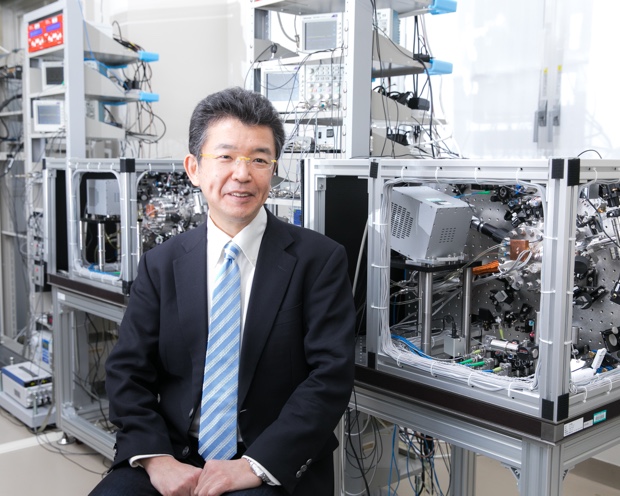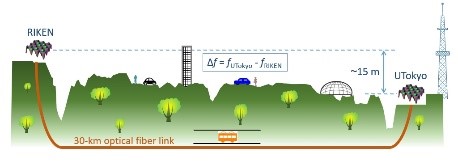Space-Time Engineering Research Team
Team Director
Hidetoshi Katori
D.Eng.

Contact
hkatori [at] riken.jp
Space-Time Engineering Research Team,
RIKEN Center for Advanced Photonics
#W421 4F Cooperation Center,
2-1 Hirosawa, Wako, Saitama 351-0198 Japan
Outline
Clocks have served as a tool to share time, based on universal periodic phenomena; humankind relied upon the rotation of the earth from antiquity. The radiation from an atom provides us with far more accurate periodicity. The state-of-the-art atomic clocks sense the relativistic space-time curved by gravity, which reveal the difficulty of sharing time with others. Moreover, such clocks may be used to investigate the constancy of fundamental constants, where the foundation of the atomic clocks is anchored.
Optical lattice clocks raised the possibility of ultra-stable and accurate timekeeping by applying the “magic wavelength” protocol on optical lattices. Since the proposal of the scheme in 2001, the optical lattice clocks are being developed by more than 20 groups in the world, and the clocks are surpassing the uncertainty of the current SI second, becoming one of the most promising candidates for the future redefinition of the second.
Our team develops highly precise and transportable optical lattice clocks capable of long time operation by introducing advanced techniques in the field of atomic physics and quantum optics; we thus explore applications of “space-time engineering” that fully utilize the novel time resource provided by such clocks. For example, a transportable ultraprecise atomic clock, which may be taken out into the field, will function as a gravitational potential meter. We experimentally investigate the impact of such relativistic geodesy as a newer role for clocks in the future.
Fields
Interdisciplinary Science and Engineering, Engineering
Keywords
Quantum electronics, Atomic clock, Quantum metrology, Optical lattice clock, Relativistic geodesy
Subjects
- Relativistic geodesy with optical lattice clocks
- Development of transportable optical lattice clocks
- Remote comparison of optical lattice clocks with long-distance optical fiber link

Remote frequency comparison of optical lattice between RIKEN and the University of Tokyo(UTokyo) reveals their different tick rates as predicted by general relativity.
Selected Publications
- Takamoto, M., Ushijima, I., Ohmae, N., Yahagi, T., Kokado, K., Shinkai, H., and Katori, H.: "Test of general relativity by a pair of transportable optical lattice clocks", Nat. Photonics 14, 411-415 (2020).
- Ushijima, I., Takamoto, M., and Katori, H.: "Operational magic intensity for Sr optical lattice clocks", Phys. Rev. Lett. 121, 263202 (2018).
- Takano, T., Takamoto, M., Ushijima, I., Ohmae, N., Akatsuka, T., Yamaguchi, A., Kuroishi, Y., Munekane, H., Miyahara, B., and Katori, H.: "Geopotential measurements with synchronously linked optical lattice clocks", Nat. Photonics 10, 662-666 (2016).
- Yamanaka, K., Ohmae, N., Ushijima, I., Takamoto, M., and Katori, H.: "Frequency ratio of 199Hg and 87Sr optical lattice clocks beyond the SI limit", Phys. Rev. Lett. 114, 230801 (2015).
- Ushijima, I., Takamoto, M., Das, M., Ohkubo, T., and Katori, H.: "Cryogenic optical lattice clocks", Nat. Photonics 9, 185-189 (2015).
Publications
Members
| Hidetoshi Katori | Team Director |
| Masao Takamoto | Senior Research Scientist |
| Atsushi Yamaguchi | Senior Research Scientist |
| Shinji Ito | Technical Staff |

